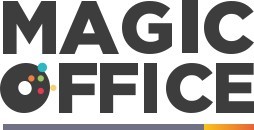
Understanding Project Scope in the Arabian Emirate Context
Comprehensive Understanding in Regional Business Landscape
Understanding the scope of a project within the Arabian Emirate context involves a clear grasp of the unique business environment, cultural sensitivities, and regional market conditions. It’s not just about defining the geographical boundaries and timelines but also involves comprehending the specific business analysis requirements, customer expectations, and regulatory frameworks.
Within the context of Arabian Emirate companies, a project scope typically encompasses a detailed scope statement that outlines what the project will achieve, the product scope detailing the features and functions expected, and a statement of work that describes the process and work necessary to deliver.
Successful project management starts with the precise definition of a scope that reflects both the project's needs and business goals. The clarity in this definition will help in avoiding scope creep—a frequent pitfall where unplanned changes add complexity to the project.
For example, when companies in the region undertake a project, they need to engage all relevant stakeholders, including business analysts, customers, and project managers, to gather requirements and define the scope items. This collaborative approach ensures that the end solution scope aligns well with the business objectives and the broader market landscape.
By effectively communicating the problem statement and proposed solutions, companies can ensure all parties are aligned and any discrepancies in expectations or deliverables are addressed early on. This alignment is crucial, as it sets the foundation for the more detailed discussions on solution scope and project deliverables, which will involve further analysis and planning.
Moreover, adopting comprehensive solution management practices by understanding the interplay between process improvements and technological advancements can lead to more successful project outcomes. For more insights into how Arab companies are reshaping customer experiences, particularly in sectors like call centers, you can read about how they are revamping the call center experience.
Challenges in Defining Solutions
Challenges in Solution Definition
Project management in Arabian Emirate companies often faces challenges in defining the right solutions. These challenges typically stem from a variety of factors, all of which need careful consideration and management to improve business outcomes.- Divergent Stakeholder Requirements: The involvement of various stakeholders, each with their individual requirements and expectations, can lead to a complex solution scope. Business analysts play a crucial role in gathering and analyzing these requirements while ensuring alignment with the project's goals.
- Scope Creep: Without a well-defined scope statement, projects risk facing scope creep, where uncontrolled changes or continuous growth in the project's scope take place. It's essential to establish a robust scope statement and product scope early in the process to prevent this occurrence, a responsibility often falling to the project manager and business analysts.
- Ambiguous Problem Statements: A lack of clear problem statements hampers the ability to devise effective solutions. The problem statement should be precise, allowing for a well-rounded analysis and facilitating the identification of solutions that are both feasible and align with the business strategy.
- Integration with Existing Processes: Solutions need to integrate seamlessly with existing business processes. This requires understanding the current workflows and business rules, which will help in crafting solutions that are not only innovative but also practical.
- Technology Constraints: Limited capabilities of existing systems or software can impede solution options. Understanding these constraints early in the project's lifecycle can guide the selection of solutions that harmonize with the current technological landscape.
Aligning Scope with Strategic Goals
Strategic Alignment Through Scope Management
In the dynamic landscape of Arabian Emirate companies, ensuring a strategic alignment between project scope and organizational goals is crucial. To achieve this, a clear and well-defined scope statement is paramount. The project scope defines the boundaries within which the team operates, dictating the project's objectives, deliverables, and the work required. The alignment process often begins with a thorough business analysis. This involves engaging stakeholders to gather insights and define requirements. By doing so, businesses can ensure that their projects are not only aligned with the broader strategic goals but also address the specific needs of the customer. An effective problem statement will help in outlining the project's direction and determining the solution scope. A common challenge is scope creep, where the scope expands uncontrollably, complicating the management process. This can often be mitigated by having clear business rules and involving experienced business analysts and project managers. These professionals play a vital role in integrating strategic goals with project execution. To facilitate this alignment, many companies are embracing software solutions that streamline the scope management process. These tools enable teams to map out features and functions, clearly defining scope items, and keeping the project on track. For further insights into how assignment notices play a crucial role in maintaining this alignment, check out this informative article. Such tools are invaluable in keeping every stakeholder on the same page, preventing misunderstandings and ensuring that the scope work aligns with strategic objectives.Case Studies: Successful Scope and Solution Integration
Examining Real-World Successes in Scope and Solution Integration
Determining the success of project scope and solution integration within Arabian Emirate companies can be challenging. However, understanding how certain enterprises have effectively managed this process can serve as a valuable guide for others striving to find balance. One example of successful integration is evident in their approach to scope items and solution will. These companies often employ a robust project management framework that emphasizes continuous analysis of the project scope against real-time business requirements. Business analysts play a crucial role here, acting as the bridge between the solution scope and the stakeholders to ensure that every problem statement and scope work is mutually aligned. During the solution scope phase, aligning product features functions with the broader business goals minimizes scope creep and allows for smoother processes. By focusing on clearly defined project and product scopes, expectations are managed more effectively, thus reducing the risk of deviating from business strategies. Moreover, companies who excel in this integration process typically conduct thorough requirements analysis at the initial stages. Engaging with customers and other stakeholders early in the project helps in refining the scope statement and the statement work, ensuring that the final solution aligns adequately with customer needs as well as the company's strategic vision. Furthermore, these companies have demonstrated excellence in interdisciplinary teamwork. A highly coordinated and communicative team, consisting of project managers, business analysts, and other critical roles, is crucial for the seamless transition from the project scope to the solution, thus enhancing both the process and the product delivered. Through these case studies, it becomes apparent that the integration of scope and solution is not just about setting well-defined boundaries. It's about continuously engaging in a strategic dialogue involving all project stakeholders. Such practices not only help in mitigating problems but also enhance the company's capacity to respond to dynamic business landscapes.Tools and Techniques for Effective Management
Techniques and Tools for Seamlessly Integrating Solutions
In the ever-evolving landscape of Arabian Emirate companies, the role of effective management cannot be underestimated when it comes to balancing project scope and networked solutions. Businesses here often grapple with encompassing various stakeholders' interests and dynamic market needs within the scope statement. Here’s a look at some tools and techniques that assist in achieving harmony between scope and solution:- Business Analysis Techniques: The business analyst is indispensable when it comes to defining scope and crafting solutions that meet both stakeholder and customer requirements. Through rigorous analysis, they are able to develop a clear statement of work by identifying essential scope items and understanding the core problem statement.
- Project Management Software: Utilizing advanced project management tools enables teams to visualize the scope of work. Tools with features functions that support both agile and traditional methodologies will help in maintaining clarity and avoiding scope creep by offering real-time tracking of progress against defined objectives.
- Collaborative Platforms: Enhancing communication and collaboration among project managers, business analysts, and team members ensures that scope projects align with strategic goals. Effective collaboration, often facilitated through digital platforms, is crucial to articulate solution scope more clearly and prevent misalignment.
- Requirements Management Tools: Platforms designed to gather, manage, and trace requirements through a project lifecycle ensure that all stakeholders are on the same page. Satisfying expectations with precise scope statements and detailed business rules forms a strong foundation for successful scope solution integration.
- Problem Analysis Frameworks: Root cause analysis is essential in avoiding missteps in scope definition. Employing comprehensive frameworks to delve into problem statements and solution possibilities will lead to well-founded product scope statements.
Future Trends in Scope and Solution Management
Emerging Trends in Scope and Solution Management
The landscape of project management in Arabian Emirate companies is constantly evolving, driven by changes in technology, business environments, and customer expectations. To remain competitive, businesses must adapt to these trends in the context of scope and solution management.
- Adaptation of Agile Practices: The shift towards agile methodologies is becoming more prevalent. This approach helps in breaking down complex project scope into manageable scope items, allowing for more flexibility to adapt to changing requirements and stakeholder needs. Agile encourages continuous feedback, which enhances team collaboration and ensures that the final product aligns closely with the initial problem statement.
- Integration of Advanced Technologies: Technologies such as Artificial Intelligence and Machine Learning are revolutionizing how business analysts and project managers handle scope project challenges. These tools provide predictive insights and help in defining precise solutions by analyzing heaps of data, thus ensuring solutions align with business rules and requirements.
- Emphasis on Customer-Centric Solutions: Today’s business solutions place a significant emphasis on understanding and meeting customer expectations. Businesses are focusing more on solution scope analysis that incorporates customer feedback early in the project lifecycle to tailor solutions that meet or exceed expectations and solve the identified problem statement effectively.
- Collaborative Platforms for Stakeholder Engagement: With the rise of digital tools, engaging with stakeholders has become more efficient. Collaborative platforms offer a space for ongoing dialogue about project goals and scope work, which improves clarity and reduces the risk of scope creep by ensuring everyone is aligned from the get-go.
- Continuous Learning and Skill Development: As scope and solution management becomes more complex, there is a growing need for continuous learning. Project managers and business analysts are investing time in professional development to stay updated with the latest methodologies and tools, ensuring that their project management skills remain relevant.
By embracing these trends, Arabian Emirate companies can enhance their project management processes, thereby improving efficiency in defining, analyzing, and implementing business solutions.













